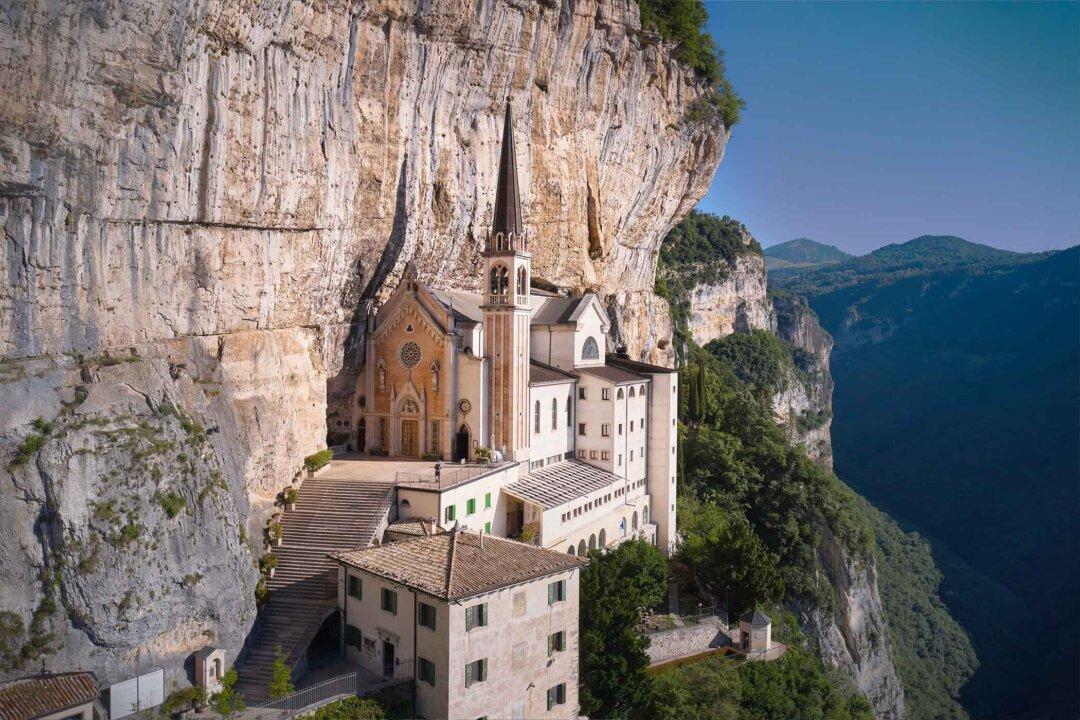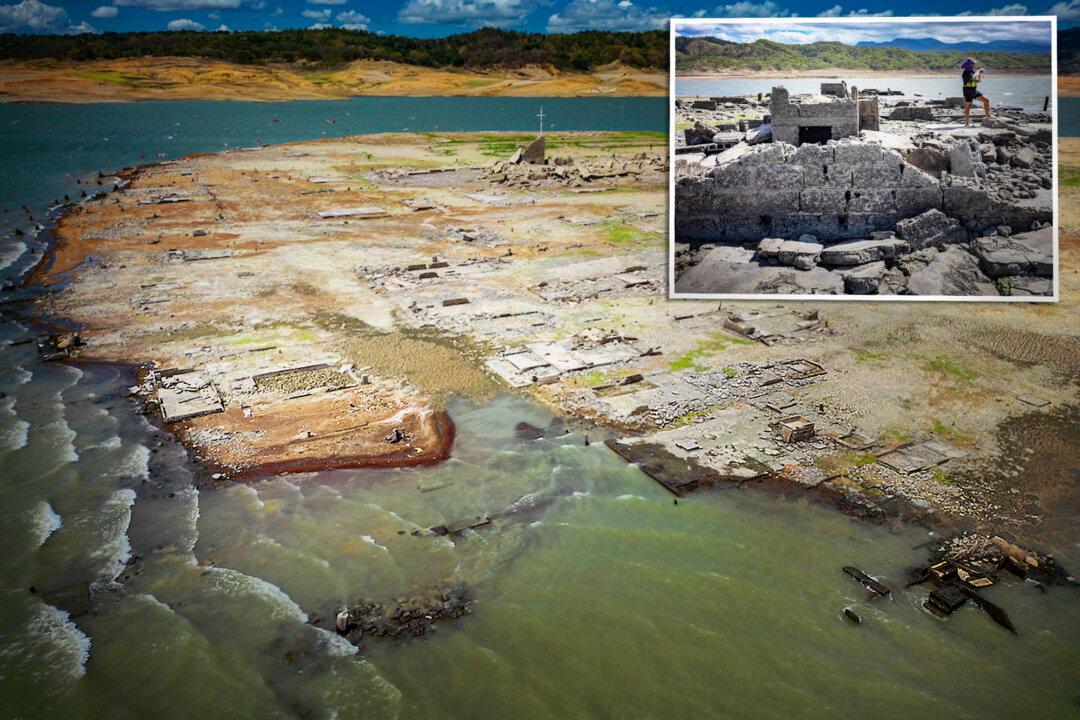One thousand or so years ago, reclusive monastics once hid themselves away from the secular world by traversing a thin shelf of rocky cliffside at Mount Baldo masiff, north of Verona, in today’s Italy. Here, crowned by steep cliffs to the north, west, and south, and adjacent valley side to the east, a hermitage hanging on the side of a cliff afforded them a spiritual place for tranquil reflection.
Today, the hermitage no longer stands. In its place, as if floating midway between Heaven and Earth, the glorious gothic façade and tower of a minor basilica seem to defy the very laws of gravity. Nested on a narrow perch, the Sanctuary of Madonna della Corona emerges half-hewn from the living rock.
Many things have changed at this holy spot in the mountains over the last several centuries. The once precarious and steep stair up the cliff has been modernized for tourists and religious pilgrims alike. A new route from atop Mount Baldo has been furnished, along with a steep flight of stairs from the larger town of Spiazzi above, from which shuttles now ferry visitors to and fro. The sanctuary itself underwent a major rebuilding and expansion in the 1970s.


Yet some things remain unchanged at the site where the Sanctuary of Madonna della Corona now stands. While sightseers are welcomed, it remains a place for solemn contemplation, where services are held regularly and respect, humility, and modesty are practiced. Pilgrims continue to sojourn here to partake in rituals and pay homage to their Lord and Savior, Jesus Christ, who died on the cross for their sins.



Legend holds angelic intervention saved a Pieta statue—depicting Mary holding Jesus’s lifeless body—from Rhodes, recently seized by the Ottomans. It had miraculously been transported to Mount Baldo. Yet, another, less miraculous account holds the statue was merely donated by Ludovico, a local lord. Visitors can peruse this historic devotional artwork today. The path leading up the cliff today is less dangerous to climb, yet its daunting 7,956 feet from the town of Brentino Bellano below challenges even the most ardent travelers. One can just imagine the trek pilgrims once endured. There is a series of 14 stations of worship on the journey, where prayers are offered by the devout. The long road is said to represent the walk of Christ carrying the cross to Golgotha.
Echoing through the clear mountain air, the silvery ring of church bells in the distance tells of this being a special place. Nearing the sanctuary, its salmon-pink tower and soaring verticality along the cliffs seem to rise to Heaven. This look owes to a number of rebuilds over the centuries. Following its inauguration in 1530, the church underwent a major project in 1625 that saw it renamed Santa Maria Baldo.


But its current awe-inspiring appearance was furnished in the 1970s. Cracked yet intact, the structure got an ambitious facelift and expansion which increased its size almost threefold to 6458 square feet. As parts of the church were demolished, the cliff wall was excavated so that parts of the interior north wall and the entire west wall were entirely hewn from the living rock.
At this time, the gothic façade and tower were also added, and the name was changed to Sanctuary of Madonna della Corona—the word “corona”, Latin for “crown”—alludes to the crown-like mountain range all around. The very church seems as though enraptured in this glorious scenery.


Amid the worshippers and tourists in the candle-lit interior, the halls of the sanctuary are filled with symbols of devotion. Yet one, perhaps more than the rest, best represents the journey here: the Scala Sancta. These 28 marble steps recreated those bloodstained by Jesus as he climbed his way to trial after being flagellated. Today the devout are seen scaling them on hands and knees, offering prayers and reflecting on the Passion of their Lord.








